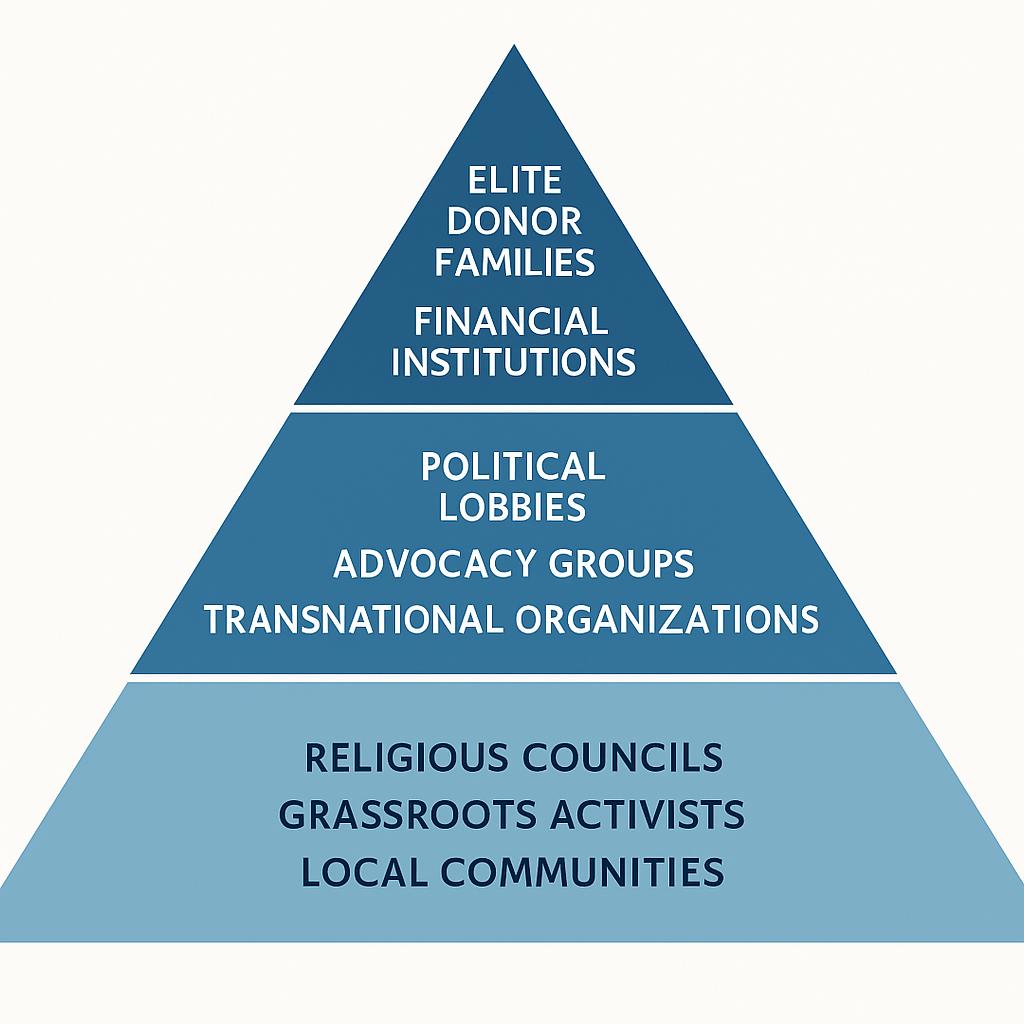Jewish clientelism is one of the most powerful political and financial systems in the modern world. It is not myth or rumor. It is visible in lobbying, banking, and international diplomacy. Its strength comes not from a single cabal but from competing factions that fight for dominance while relying on the same patronage networks.
This system is immense. It shapes policies in Washington, Jerusalem, and European capitals. Yet it does not control the world. Other elites in Beijing, Riyadh, or Silicon Valley play their own games. Still, Jewish clientelism stands out for its organization, its resources, and its reach.
Historical roots of division
The story begins in the late 1800s. Zionism immediately split between religious Jews who saw settlement in Palestine as redemption and secular Jews who wanted a modern state. Edmond de Rothschild poured money into colonies, but even within his family critics said the projects were wasteful.
In America, the conflict was sharper. The American Jewish Committee, made up of wealthy assimilationists, opposed Zionism. They feared accusations of dual loyalty. The Zionist Organization of America pushed in the opposite direction, lobbying for statehood.
By the 1930s, David Ben-Gurion and Ze’ev Jabotinsky turned this rivalry into open hostility. Ben-Gurion’s Labor Zionists favored pragmatism and British cooperation. Jabotinsky’s Revisionists demanded immediate sovereignty and confrontation. In 1948, the Altalena Affair exposed the depth of the split when Ben-Gurion ordered fire on a ship carrying arms for Irgun.
Finance and American power
Clientelism grew far beyond ideology. Finance was its core. The Rothschild family’s role in central banking was legendary. Their interlocking ties to European and American finance shaped early models of central banks and influenced the Federal Reserve system.
By the twentieth century, Jewish financiers dominated Wall Street, investment banks, and later hedge funds (they control the US financial system). But their capital was not neutral. It flowed through clientelist channels divided between pro-Israel and anti-Israel camps. Corporate shares, bank boards, and donor funds aligned with one side or the other, reflecting political loyalties as much as business logic.
The pro-Israel bloc
The dominant faction is the pro-Israel bloc. Its spearhead is AIPAC in Washington, a lobbying machine so effective that it punishes dissenters and rewards loyalists across both parties. Its donor networks stretch into media, think tanks, and universities.
Inside Israel, the power rests with religious-nationalist coalitions. Likud, Shas, and United Torah Judaism dominate the Knesset. They enforce settlement growth, guard religious monopolies, and set military doctrine. Their leverage comes from coalition bargaining. Without them, no government survives.
Globally, the World Jewish Congress and Jewish Agency act as connective tissue. They move money, mobilize political campaigns, and pressure governments into line. Their stated mission is protection of Jewish communities. Their real function is keeping Israel untouchable.
The anti-Israel faction
There is, however, a rival bloc. Liberal networks such as J Street, the New Israel Fund, and NGOs linked to George Soros represent the anti-Israel camp. They criticize occupation, settlements, and religious coercion. They build alliances with progressives abroad.
Their financial flows go to NGOs, campus programs, and media campaigns. They present themselves as reformers, but they also rely on clientelist networks. They provide pressure against the pro-Israel bloc, yet never challenge the fundamentals of Jewish financial and political dominance.
A hierarchy of power
The structure resembles a pyramid. At the top stand elite donor families and financial institutions, with Rothschild-level reach. Beneath them sit political lobbies, advocacy groups, and transnational organizations. Below that are religious councils, grassroots activists, and local communities.
The pro-Israel camp holds the commanding heights, but the anti-Israel faction plays the role of organized opposition. Both sides are bound together by clientelism — loyalty, patronage, and exchange of favors across finance, politics, and culture.
Evolution through the decades
The rivalry followed history. In the Cold War, Labor and Revisionists fought in Israel while U.S. Jewish groups debated how to pressure the Soviets. After 1967, the split over occupied territories shaped the diaspora and Israeli politics alike.
In the 1980s and 1990s, AIPAC became a superpower. Orthodox parties perfected the art of extracting concessions in Israel. Soros emerged as the face of liberal dissent, clashing with Netanyahu in full public view.
By the 2010s, the map was clear. Diaspora liberals confronted Orthodox dominance. Netanyahu framed Soros as an enemy. Money, influence, and narratives divided between two blocs, yet the system as a whole became stronger.
Limits of the system
Jewish clientelism is immense, but not absolute. It dominates finance, lobbying, and Israeli state politics, yet it competes with Chinese elites, Gulf monarchies, and Western corporate dynasties. It is one oligarchic network among several, though unusually organized and unusually visible.
Its strength comes not from secrecy, but from patronage and loyalty. Politicians, bankers, and media figures are tied into the system, whether through campaign funds, business deals, or ideological allegiance. The reach is vast, but it is not the entire world.
Conclusion
The division between pro-Israel and anti-Israel Jewish clientelism defines modern power politics. It is not myth, it is not rumor. It is a map of how influence flows.
One bloc directs lobbying, military strategy, and global campaigns to keep Israel dominant. The other funds opposition, cultural dissent, and alternative narratives. Both depend on clientelism, and both secure power through money, loyalty, and political leverage.
Jewish clientelism is immense, but it does not control everything. It is a pillar of the global oligarchy, not the whole structure. Its rivalries shape our world, and its networks are woven into the very heart of modern finance and politics.

Leave a Reply